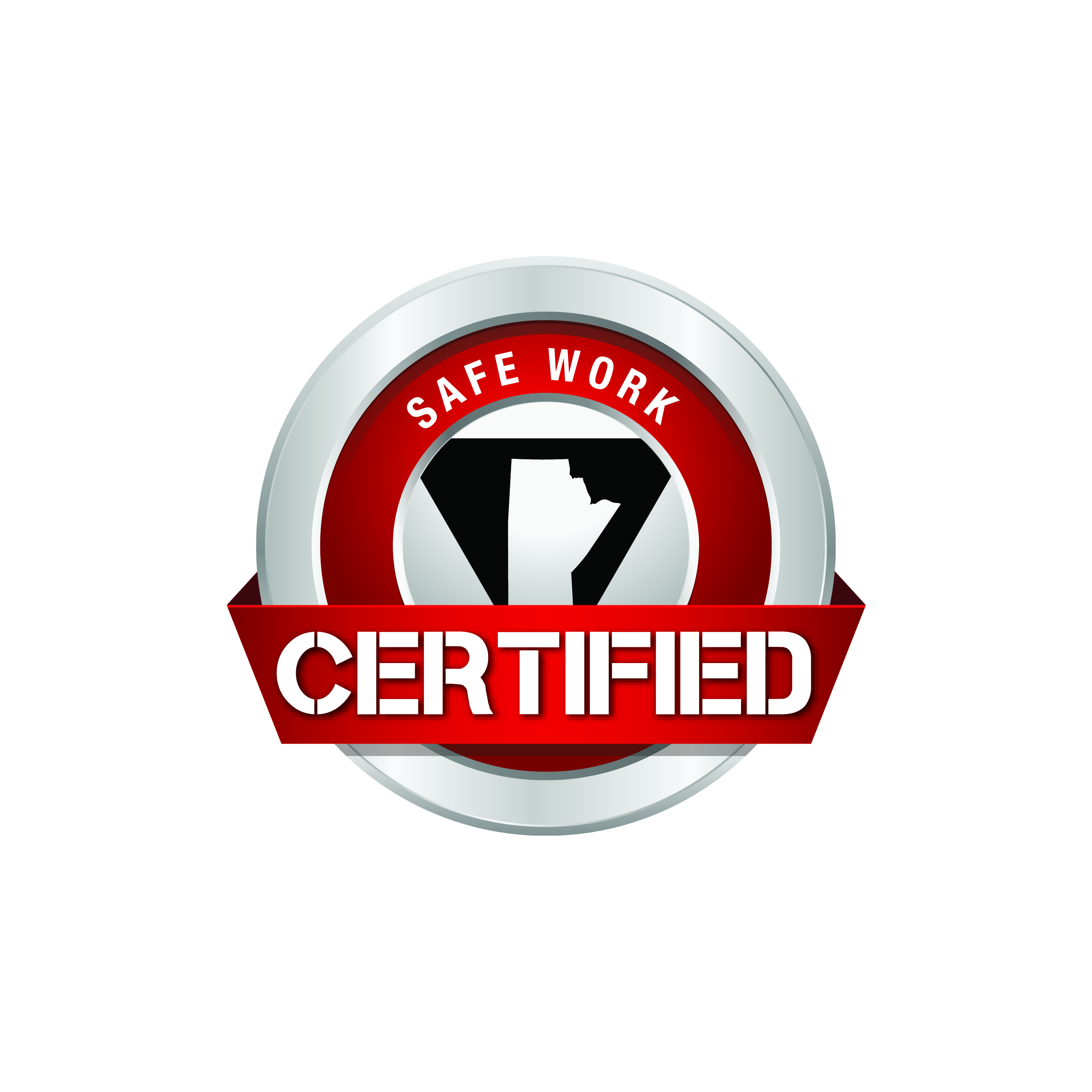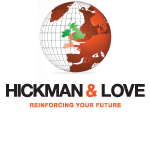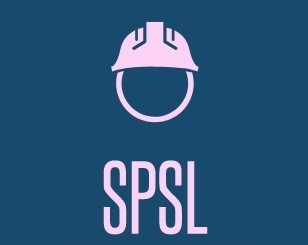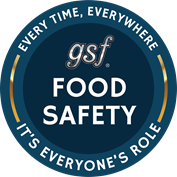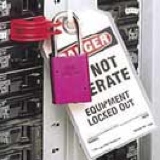Title Page
-
Conducted on
-
Prepared by
-
Signature of Lead Auditor
-
Location
A - Employer Commitment
-
Is the safety and health policy statement posted or made readily available?
-
• The safety and health policy statement is posted in a prominent location and/or made available through employee handbooks.
-
Is the violence prevention policy posted or made readily available?
-
• The violence prevention policy is posted in a prominent location and/or made available through employee handbooks.
-
Are good housekeeping practices evident?
-
"• Good housekeeping is evaluated as an indicator for the overall integrity of the safety program and the degree of diligence given to ensuring a safe workplace.
• Within the context of the activities of the organization, the workplace is clean and uncluttered with no restrictions to the access to exits, building engineering controls, workstations, or storage areas." -
Is the harassment prevention policy posted or made readily available?
-
• The harassment prevention policy is posted in staff areas and/or made available through employee handbooks.
B - Evaluation and Continuous Improvement
-
Is the safety and health program manual readily available?
-
"• A copy (or copies) of the organization's safety and health program manual is available for reference.
• Available can be defined as either print copies kept in a staff area or through online access."
C - Safety is Communicated and Demonstrated
-
Does the employer have a safety bulletin board or boards?
-
"• There is a bulletin board in a prominent place that is readily accessible to workers which is used to post safety related information.
• The bulletin board must be up to date.
• Information may be communicated by other methods where posting is not reasonably practicable." -
Is signage appropriate to work activities?
-
• There is proper signage to identify local hazards and protective measures. • Signage is not obstructed or soiled and is placed in an effective location.
D - Roles and Responsibilities
-
Are written safe work procedures followed in accordance with the safety management system?
-
• The auditor must observe workers working in accordance with safe work procedures. If violations are observed, the course of action taken by supervisors should be noted and evaluated.
-
Are safety rules followed?
-
• The auditor must observe workers working in accordance with company safety rules. If violations are observed, the course of action taken by supervisors should be noted and evaluated.
-
Are supervisors observed coaching workers.
-
"•The opportunity to observe supervisors coaching workers is not always likely to arise in the course of an audit and should not be solicited.
• If such activities should be observed, they should be noted and evaluated when they occur. " -
Do supervisors enforce safety procedures and rules?
-
"• The opportunity to observe supervisors enforcing procedures or rules is not always likely to arise in the course of an audit and should not be solicited.
• If such activities should be observed they should be noted and evaluated when they occur."
E - Hazard Identification, Assessment, and Control
-
Have control strategies been developed and implemented for identified hazards?
-
"• Where a risk to workers' safety and health exists, the employer must eliminate or control the hazard.
• Hazards must be controlled at the source, along the path or at the worker level using the hierarchy of controls, which includes substitution (substituting a less hazardous material), engineering (installing machine guarding, ventilation), administrative (safe work procedures, worker rotation) in combination with personal protective equipment (face shields, safety harnesses and lanyards, respirators).
• In applying the hierarchy of controls, consideration should be given to the risk reduction benefits, reliability of available options, legislative requirements and relative cost.
• The organization should document and keep the results of hazard identification, risk assessments and determined controls. " -
Do all workplace parties have access to applicable safe work procedures?
-
• The auditor must verify that the employer has made copies of relevant safe work procedures readily available at each work location.
-
Are safe work procedures relevant and applicable to work activities?
-
• During workplace observations, the auditor must confirm that workers, supervisors, contractors, visitors and other persons in the workplace are performing tasks in accordance with developed safe work procedures. Safe work procedures must accurately reflect current work activities.
-
Is personal protective equipment appropriate for the work activities and properly maintained?
-
• The employer must provide personal protective equipment where prescribed by legislation. The equipment provided must be appropriate for the hazards associated with the workplace and the equipment must be maintained.
F - Emergency Management
-
Does each work location have a first aid plan?
-
• The contact information for first aiders must be posted or identified to all workers. The location of the first aid room and emergency contact procedures must also be communicated.
-
Does each work location have the correct number of first aid providers with the training appropriate to the nature of the operation and the number of workers?
-
• Each work location must provide first aiders in accordance with applicable legislation.
-
Does the workplace have fire and life safety equipment which are appropriate for the occupancy and operations? Is the equipment readily accessible and maintained?
-
"• The workplace is equipped with fire extinguishers, fire hoses, standpipes, sprinklers, fire exits, fire exit signs, detection devices, alarms, exit doors, exit hardware, and emergency lighting which is appropriate to the occupancy and operations.
• Life or fire safety features have not been compromised by poor housekeeping or maintenance. Examples might include blocked fire exits, burnt out fire exit lights, out of date extinguishers, blocked sprinkler heads, etc." -
Is the evacuation plan or plans posted?
-
• In less complex workplaces, a basic evacuation plan may be posted on the safety bulletin board. More complex occupancies may require location-specific emergency plans and floor plans.
G - Contracted Workers and Other People in the Workplace
-
Are all of the duties of a prime contractor being fulfilled?
-
"• A prime contractor is required at a construction project if more than one employer or self-employer person is involved in work at the construction project site at the same time.
• The duties of a prime contractor are to establish a system to co-ordinate, organize and oversee the performance of all work at the construction project site.
• Considerations should include: the establishment of a workplace safety and health committee, safety meetings, specified safety program documentation requirements and ensuring that work is performed in accordance with applicable legislation. "
H - Safety and Health Training and Orientation
-
Have workers who use personal protective equipment been trained in its use, inspection and maintenance?
-
"• This requirement is applicable for all personal protective equipment that a worker is required to use. Workers should be provided with instructions for the proper fit, care and use of all required personal protective equipment.
• The auditor should observe workers following procedures for inspection, care and maintenance. "
I - Inspections
-
Are inspection results communicated to all affected workplace parties?
-
"• Inspection results should be discussed with all workplace parties. This can be accomplished through safety meetings, crew talks, huddles, or other forums.
• The auditor should also verify inspection results have been posted or made readily available in a prominent location at the workplace. " -
Are deficiencies corrected in a timely manner?
-
"• Hazard controls must be implemented for all identified deficiencies.
• All deficiencies must be brought to the attention of the persons responsible for correction.
• The auditor should review completed inspection reports and confirm items marked as deficient have been corrected." -
Is there a process to effectively remove overdue and/or defective tools, equipment and vehicles from service?
-
"• The auditor must verify there are written procedures to prevent defective tools, equipment and vehicles from being used, which provide instruction to employees with respect to the course of action to be followed. A lockout system is the most common and is also a requirement under legislation.
• Personnel must be able to demonstrate their understanding of the company's process to remove defective items from service, including where and to whom they should report or return defective items. "
J - Incident Reporting and Investigation
-
Are opportunities for corrective and preventative actions being identified and addressed?
-
"• Investigation reports should identify the direct, indirect and root causes, and list recommendations for the prevention of a re-occurrence.
• Recommendations should be implemented in a timely manner. • Once identified, a system to follow-up on implemented recommendations should be developed.
"
K - Worker Rights and Responsibilities
-
Has the harassment prevention policy been communicated to the workforce?
-
• The auditor should observe the information to be posted on safety bulletin boards or circulated to the workforce through employee handbooks, accessibility to the safety management system manual or other acceptable methods.
-
Do workers comply with safety rules and safe work procedures?
-
"•At the time of workplace observations, the auditor must determine if work activities comply with safety rules and safe work procedures.
• The auditor should be familiar with any safety rules as well as related safe work procedures. During workplace observations, all conformance and non-conformance to safety rules and safe work procedures, should be noted and evaluated." -
Has appropriate personal protective equipment been provided to workers?
-
• During observations, the auditor should determine whether personal protective equipment is appropriate for the workplace and the related hazards. A review of the risk assessment, material safety data sheets or safe work procedures would assist in determining appropriate personal protective equipment.
-
Is relevant safety information readily available to workers?
-
• Information and publications related to: safety regulations, legislation, standards, codes, safety management systems, operational manuals, safe work procedures, safety and health committee minutes and other pertinent safety documentation must be made readily accessible to workers. Accessibility may be provided in common locations such as lunch or rest areas or through electronic media.
L - Workplace Safety and Health Committees and Worker Representatives
-
Are the names of the safety and health committee members and/or representative posted prominently in the workplace?
-
"• The auditor should observe the names of all safety and health committee members or representatives posted in a prominent location in the workplace.
• Names must be posted on the bulletin board or communicated through other appropriate methods." -
Are minutes from the meetings held with the committee/representative posted or otherwise made available for review?
-
"• Minutes from meetings with the committee must be posted in a prominent location or on a bulletin board.
• Alternative means of communicating the information may include electronic formats such as posting the minutes on a readily accessible internet or intranet site, through email or hard copy distribution. "
M - Protecting Vulnerable Workers
-
Are written safety materials, such as safe work procedures or safety rules available in languages appropriate for the workforce?
-
• If the auditor has observed workers at the workplace having limited English language abilities, he or she should determine if safety related documents and information have been translated or made available in a language to which these workers are accustomed.
-
Is safety signage designed and displayed so that it effectively communicates with all members of the workforce?
-
• Is signage in the language or languages of the workforce, and/or use graphics to communicate hazard and safety information?
-
Are the methods used for safety training, and training verification, appropriate for all members of the workforce?
-
• Safety training and the verification of safety training must make allowance for language, cognitive, perceptual, and cultural barriers to learning. Appropriate verification methods may include: written, oral, or performance based testing and the results should be documented.
-
Have life safety and emergency features been adapted to accommodate the needs of vulnerable persons in the workplace?
-
• Features such as visual fire alarms or access ramps may be integrated into the workplace as needed.
N - Industry Specific - Made Safe
-
Are machines being operated appropriately with applicable machine guards?
-
"Machine /Lock out • Preventative maintenance reports for equipment are available
• Operators perform regular inspections of machinery
• A lock out policy and machine specific procedures are available
• Machine guarding is in place, compliant to regulation and appropriately used" -
Are formal training and operator evaluations completed and documented for powered mobile equipment?
-
"Powered Mobile Equipment (Crane, Forklift, Aerial, work platforms, etc.) • The use of power mobile equipment must be consistent with established training and requirements
• Verification must include observations of completed pre-shift inspections
" -
Are racking and shelving used in accordance with applicable standards?
-
"Storage - Industrial Racking and Shelves (Hand Loaded)
• Material is stored appropriately and there is no evidence of visible damage
Industrial Racks (Powered Mobile Equipment loaded)
• Load capacity signs are posted for each bay, safety pins are in place, and appropriate guards/bollards are installed where powered mobile equipment traffic is present
• The auditor should review completed racking inspection reports to confirm that notable damage is within allowable tolerances or has been corrected" -
Does the workplace demonstrate good housekeeping?
-
" Housekeeping A. Building & Yard • The workplace is organized and uncluttered. Access to exits, electrical controls/panels, overhead electrical lines, workstations or storage areas are not restricted
" -
Are hand tools/ladders maintained and stored?
-
"Housekeeping B. Hand Tools & Ladders • Tools, equipment and ladders are stored appropriately (blades covered/guards present) and there are no signs of visible damage
• Shadow boards for tools are present and/or storage spaces for equipment have been designated
" -
Is there an established fall protection program in place in accordance to applicable standards?
-
"Fall Protection • Fall protection equipment is stored properly
• There are no signs of visible damage
• The opportunity to observe persons using fall protection equipment may not always arise in the course of an audit and should not be solicited.
• If activities are observed in which fall protection is used, these should be noted and evaluated when they occur" -
Does the workplace have a confined space entry program?
-
"Confined Space • A master inventory of confined spaces has been developed and is maintained
• Signage is present that identifies confined spaces
• The auditor must verify that the employer has a permit system in place, an established rescue plan and that proper equipment is readily available "
